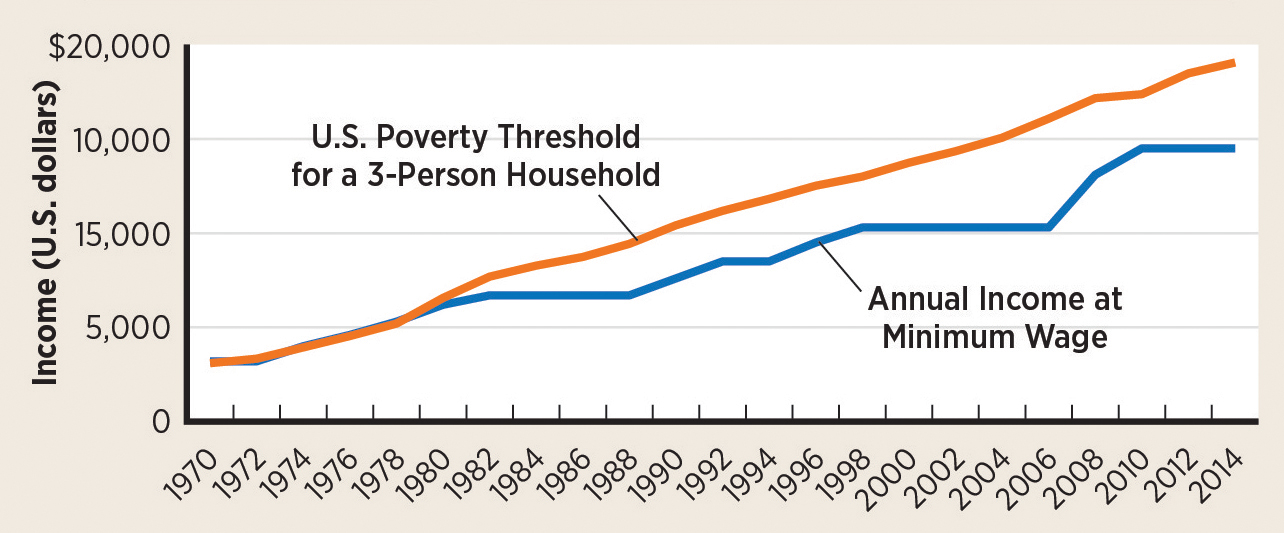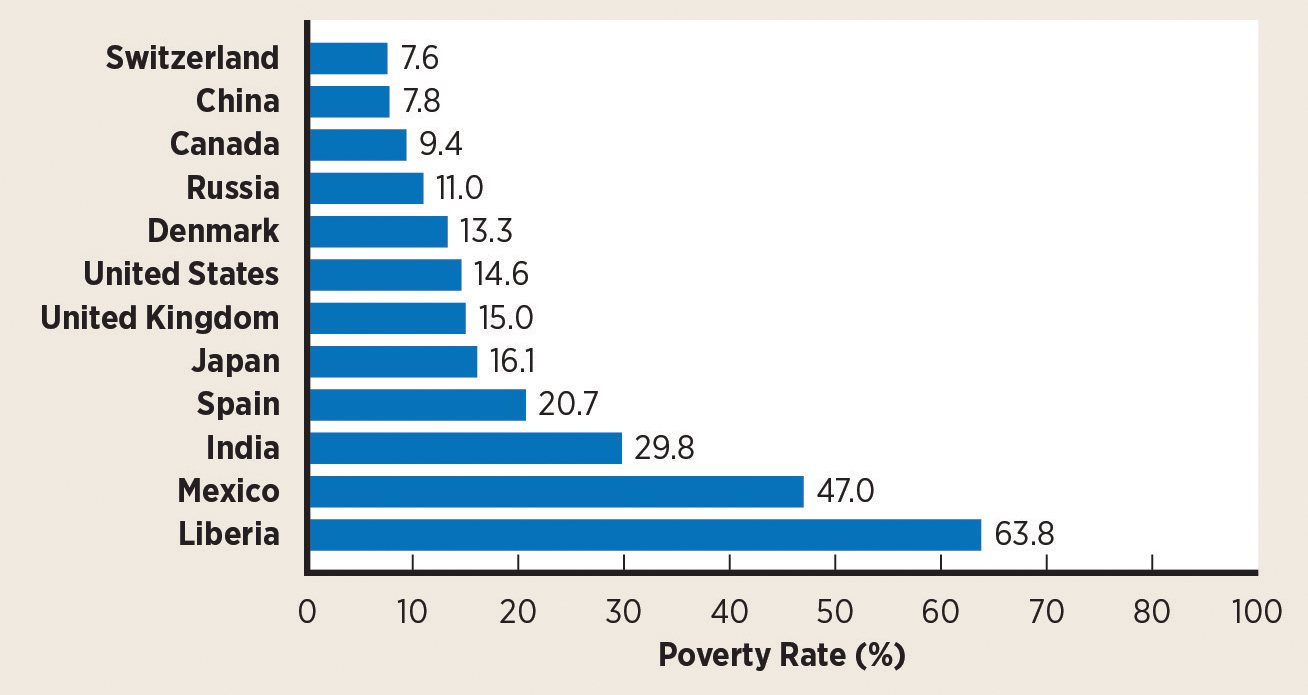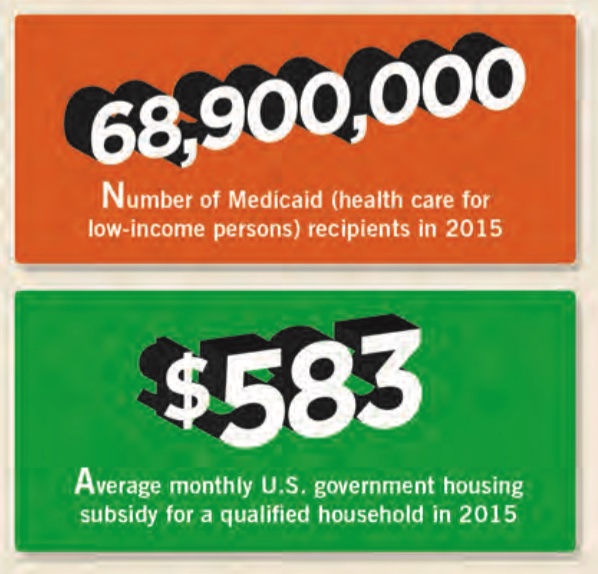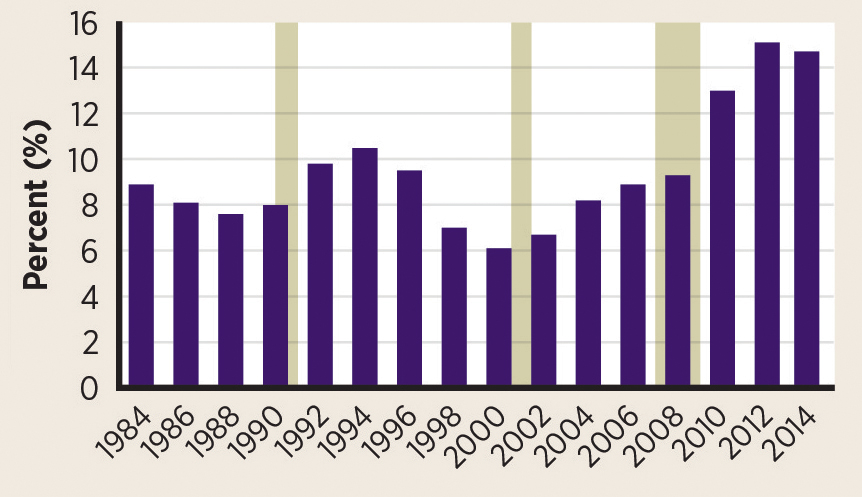Printed Page 397Menu
Poverty and the Economy
Poverty is a problem facing people in virtually all countries, both rich and poor. Each country uses different methods to address poverty, including assistance for food, housing, health care, and education.

The U.S. federal minimum wage is an example of government policy aimed at curbing poverty. In the 1960s and 1970s, one person working a full-time job at the minimum wage was roughly able to keep a family of three out of poverty. Since the 1980s, the minimum wage has not kept up.

A single-parent working full-time at the minimum wage is unable to keep a family out of poverty.

Every country has its own measure of poverty, making a comparison of countries and their official poverty rate misleading. For example, Switzerland and China both have an official poverty rate of less than 8%. In China, this means a family of four living on less than $1,500 a year; in Switzerland, it means living on less than $48,000 a year plus having generous health care, education, and retirement benefits.


The percentage of Americans receiving food stamps fluctuates with the economy. The last recession and slow recovery caused food stamp usage to rise.

Unlike food stamps of the past, food stamps today work like a debit card.
Page 398
[Leave] [Close]